With respect to video game history as a whole, we’re reaching a point where certain, longstanding series are reaching milestones like 35th and even 40th anniversaries. Along the way have been multiple generations of systems, games flipping sides when it comes to exclusivity, and for a time there was the dread of whether certain Japanese games would even be translated and localized.
At the intersection of all of that lies a series that’s remained a favorite of mine and one whose growth and change I’ve seen unfold for nearly two decades. Bandai Namco’s “Tales of” is the RPG franchise for me, for several reasons that’ll be referenced throughout this piece. Rather than simply gush, though, I want to look at practically the entire main series in terms of both localization and presence on Nintendo consoles.
Like many JRPGs, Tales of saw its start on a Nintendo console before being coaxed onto Sony’s disc based Playstation platform in the mid-90’s. One of the most notable turning points, a little GameCube gem called Tales of Symphonia, is celebrating its 17th birthday today while there’s “a lot planned” for the Tales of 25th anniversary this year. From its 16-bit start all the way to the HD present, join me on a look back at the tales of Tales of for a Nintendo fan overseas.
Tales of Phantasia
The Tales of series was born on the Super Famicom in December of 1995. Conceptualized and created by a group known as Wolf Team, they would attempt to strike a deal with a more established publisher for their ambitious fantasy RPG. That publisher would be Namco, though due to some proposed changes and creative disagreements many of the initial Wolf Team members would leave to form tri-Ace and develop Star Ocean with Enix.
Phantasia was unique from the get-go, laying the groundwork for what would become Tales of staples. The story took inspiration from Norse Mythology and time travel science fiction, used high capacity cartridges to include voice samples (and even a theme song with lyrics), characters were designed by manga artist Kosuke Fujishima, and it founded the cornerstone of the series – the Linear Motion Battle System. All of these points together create a game that both stood out aesthetically and drew players in to its plot and gameplay.
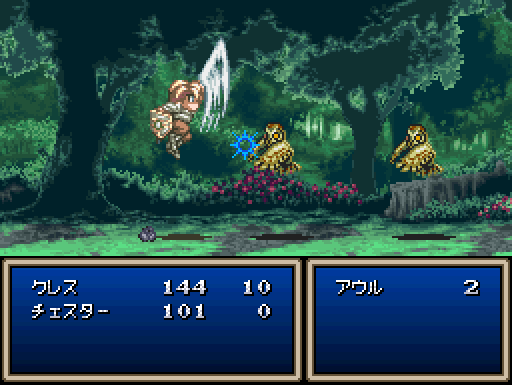
Looking back, some aspects of the game can sound cliche but at the time they were much more unique for the genre. These elements would likewise inspire future Tales of titles, such as the use of morally ambiguous villains or parallel worlds inadvertently affecting each other. Those reveals occurring near the halfway point of the game to affect the characters’ (and the players’) perspective on the game’s events can also be traced back here, as can the myriad item names (Gald for currency, Gels for healing, etc.)
Speaking again about the LMBS, it can’t be understated how much it contributes to making the series standout. More than anime visuals or the unifying musical direction of Motoi Sakuraba it was this unique and much more active combat that set Tales of apart. In its earliest form it took place on a 2D plane, similar to a fighting game (hence the “Linear”) and was fast paced and didn’t rely on turns (hence “Motion”). Add on several special moves for each character (though multiplayer/character selection wouldn’t be introduced until later entries) and it was more dynamic than anything Final Fantasy, Dragon Quest, or other RPGs were doing at the time.
Phantasia’s protagonist, Cress Albane, is fairly one note as an RPG hero (with later games giving him a bit more personality) but his techniques and attacks (or Artes) make their way into nearly every other Tales game since. He’s joined by the likes of healer Mint Adenade and the vivacious, broom riding caster Arche Klein and more, with the cast all having a part to play in the narrative. It also introduced the recurring Summon Spirits of the series, and was the first to feature a World/Mana Tree. While this particular release was never localized until 2006 via a (somewhat notorious) Game Boy Advance port, its influence can be felt most heavily in the Tales of title that introduced many a Nintendo fan to the series several years and a couple console generations later.
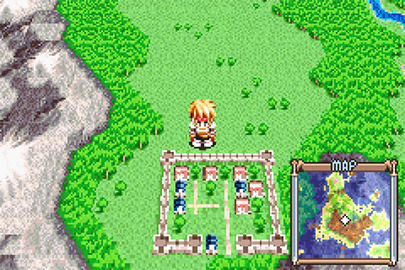
A PlayStation Date with Destiny
Before that though, the series made a mark on a different system. The PlayStation became well known for its catalogue of Japanese RPGs, and the Tales of series was among them. Phantasia would even be remade for the system, refining itself further and introducing elements like Cooking and even a new playable character.
One of the series’ most popular and referenced entries, Tales of Destiny, was made for the system and was followed by Tales of Eternia. Both of these were localized, but didn’t quite gain much traction – case in point, the PlayStation 2 sequel to Tales of Destiny remained (and has remained) Japan exclusive. This issue might also have to do with Tales of Eternia releasing overseas as “Tales of Destiny 2” due to concerns regarding the trademarking of “Eternia” before the actual Destiny 2 was made. In America it wouldn’t be until the GameCube that the Tales of series would truly make its mark and earn its due.
Tales of Symphonia
In August 2003, Tales of Symphonia released in Japan exclusively for the ol’ purple lunchbox (or seafoam lunchbox, as it were in this case) and marked the series’ return to a Nintendo console after nearly eight years. It marked the series’ first step into 3D and saw the dev team fully shift from “Wolf Team” to “Namco Tales Studio”. A year later it would release in North America and, thanks to elements like stronger marketing, an (almost) full English dub, and a fairly shallow pool of RPGs on the system, Symphonia embedded itself in fans memories like an Exsphere in the back of your hand.
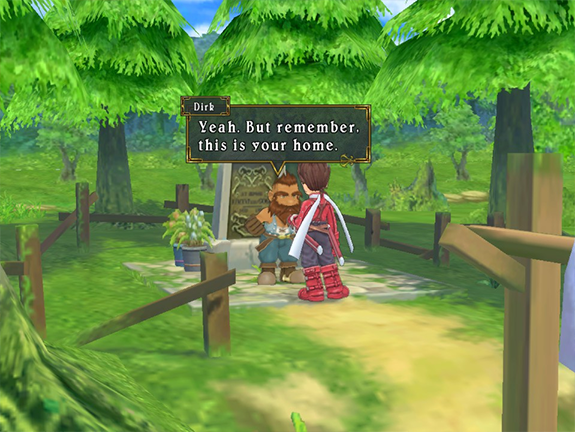
The game was massive, both in scale for the time and the fact that it came on two discs. The battle system saw more depth, with characters having two different “sets” of potential attacks. This being the first 3D entry in the series meant the LMBS was modified to let players run on defined “lanes”, to both distance from and circle around enemies. With nine playable characters, each having their own stories and fighting style, this battle system overhaul made for an even more dynamic experience, while the cast made the story (and side stories) more engrossing. For these and other reasons, it stands out as the game that drew me into both this series and RPGs as a whole. It hasn’t aged perfectly in many respects, and later games arguably out do its narrative, but in terms of impact in the west it’s currently untouchable.
This next paragraph will be spoilery, so consider yourself warned.
Its plot concerns a party escorting a “Chosen One” on an angel guided pilgrimage, but soon spirals into ideas of parallel worlds, coffee based drama, the folly of blind martyrdom, self-serving ideas of justice, racial persecution, and even an “I am your father” moment. The relationship between main character Lloyd “two swords are twice as strong” Irving and hired mercenary Kratos Aurion is abrasive at first, but soon develops into a mentor role before he not only betrays the party due to past loyalties but is eventually discovered to be Lloyd’s father. The twist itself is nothing new, but it’s handled well and gradually that having these two fight one on one (in what is predominantly a party based game) is cathartic both in their respective character arcs and how it ties into the larger narrative – which is eventually revealed to be a distant prequel (or at least somehow related) to Phantasia.
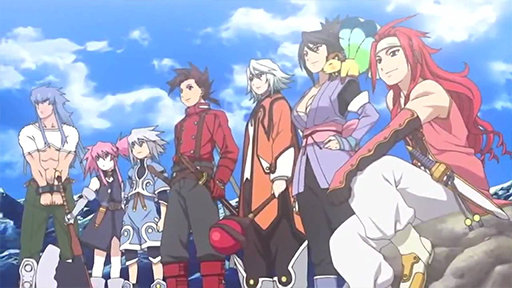
Unfortunately this would be the last time for a long time that overseas fans would enjoy a Tales game on a Nintendo console. Symphonia would see a Japan exclusive enhanced re-release on PS2 shortly after the NA GameCube launch, followed by new entries on Sony’s system and even a remake of Tales of Destiny.
Back to PlayStation and into the Abyss
Among those Playstation 2 releases would be Tales of Rebirth and Legendia – the former of which would go unlocalized while the latter would be a departure in many ways handled by a different dev team (Project MelFes, which brought together Tales team members with some behind Tekken and Soul Calibur). The one players remember most though would be Tales of the Abyss, a game rooted in issues of identity and the rejection preordained events, which managed to build off of what Symphonia had done and has become highly regarded in a similar way. While this entry managed to make a mark in both Japan and America, the series’ stature on Nintendo consoles wasn’t nearly as impressive.
Handheld attempts and defining designations
Tales of titles up to this point had been predominantly console titles, with handhelds only seeing spinoffs. This included Tales of Phantasia: Narikiri Dungeon on the Game Boy Color, which would receive two sequels on Game Boy Advance, and the PSP crossover Tales of the World: Radiant Mythology, which featured characters from every Tales of game up to that point. In 2006 though, Namco would task developer Dimps with helping them develop the next Tales of title for the Nintendo DS. That game would be Tales of the Tempest, and it did not do well.
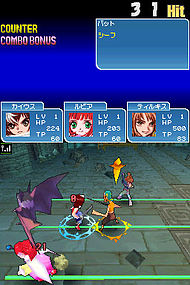
It could be argued this was a hardware limitation situation, and that after growing so much it didn’t make sense to “scale back” the Tales of formula. This would lead to an interesting move for the series, where the “main” entries gained a designation as Mothership titles while “side” entries would be Escort titles. Tempest was originally to be a Mothership title, but due to poor reception was shifted to Escort. It would take the concurrently developed Tales of Innocence to show that a handheld Tales title was indeed possible, though these both remained Japan exclusive.
Tales of Symphonia: Dawn of the New World
After this the series would return to home consoles in 2008, with a pair of titles that actually would be localized. The first of these was Tales of Vesperia, which like Symphonia and Abyss before it would be embraced by fans and remains a standout of the series. While you may’ve played this one on Switch by now via its Definitive Edition, originally it was an Xbox 360 exclusive, and one of the biggest system sellers for Microsoft in Japan at the time.
Nintendo fans instead received a direct sequel to Symphonia on the Wii. Tales of Symphonia: Dawn of the New World was designated an Escort title from the get go, but being a direct sequel to the popular entry left it with big shoes to fill. Unfortunately it sidelined the previous cast (and recast many of their voices) and introduced a monster catching and raising mechanic that lowered their presence even further. While some of its original characters are well regarded, like protagonist Emil Castagnier, the game unfortunately didn’t live up to expectations. This would continue the series’ more tepid popularity outside of Japan, and with Vesperia having released the same year to much stronger success and fan reception, things weren’t looking good for the series’ localization prospects.
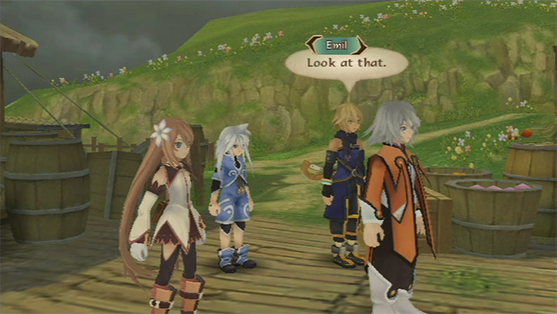
Tales of Hearts
That’s not to say the series didn’t have legs when it came to Nintendo. The next two entries for the series would debut on the Nintendo DS and the Wii, those being Tales of Hearts and Tales of Graces. Hearts, the handheld entry, attempted to cater to changing tastes by releasing both an “anime” version that utilized recurring studio Production I.G and a “CG” version that instead used more contemporary (at the time) RPG visuals that were computer generated. The versions themselves were otherwise identical, and soon it was determined the anime style was more popular, with that remaining the series’ aesthetic since.
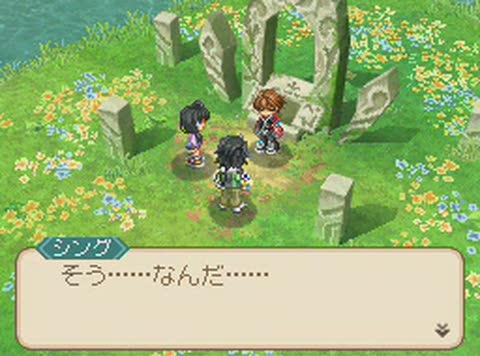
Unlike the previous DS entries, Tales of Hearts was actually handled predominantly by Namco Tales Studio. They opted for 2D sprites, which harkens back to older releases and suits the system better in some ways. While this DS release would remain unlocalized, Hearts would eventually come to the west as Tales of Hearts R for the PS Vita with 3D battles and new playable characters instead. In the US though it would be a digital only release, save for a small physical run exclusive to GameStop. This made its 2014 localization (while welcome) feel almost like an afterthought or experiment compared to other titles before or since. Fellow DS title Tales of Innocence had received a similar “R” treatment on Vita as well, though that would remain Japan only.
A lack of Grace
As for the Wii, Tales of Graces would be released in Japan in 2009. Its story predominantly concerned ideas of friendship, but also boasted one of the faster battle systems for the series thanks to side-stepping mechanics and the ability for characters to shift between two ‘styles’ mid battle. It was well regarded, though the Wii release would be recalled in 2010 due to software bugs. This may’ve played some part in the game not being localized on Wii, though the game would eventually come as Tales of Graces f in 2012 for the PS3, with a new post game story and other additional content.
Back to PlayStation: where we are today
That brings us to the current era of Tales games. Between 2011 and 2016 four new Mothership Tales of titles have been developed and they’ve all released exclusively on PlayStation systems. Tales of Xillia, originally released for PlayStation 3 in 2011 but localized in 2013, would go on to surpass Symphonia in terms of sales in the West. That same year Symphonia and its sequel would be re-released on PS3. Xillia’s success (and some might say unfinished nature) would lead to it receiving a direct sequel on the same platform, simply titled Tales of Xillia 2, with a similar localization turnaround.
It’s about here that things start to look up for the series overseas. To their credit, Bandai Namco has not only been consistently localizing these titles but they’ve been shortening the turnaround every time. What used to take a year or two is now condensed to half a year, in the cases of Tales of Zestiria and Tales of Berseria. Both of these were developed for PS3, but also received touched up ports for PS4 and likewise continue the series’ recognition in America and Europe. Though I wouldn’t call the series a household name here, it’s presence and profitability has definitely grown. It’s a far cry from Japan’s arena events and orchestra concerts, but it’s growth. Multiple mobile titles have also been released, up to and including the recently launched Tales of Crestoria, though their service periods tend to end fairly quickly. But what about Nintendo fans?
Tales of the Abyss 3DS & Tales of Vesperia: Definitive Edition
Since 2008 with Dawn of the New World, only two Tales of titles have come to Nintendo systems outside of Japan.
Thankfully, they’re two of the best.
In 2011 Tales of the Abyss was released for the Nintendo 3DS, porting the PS2 game both to a handheld and to a Nintendo system for the first time. It was a pretty smooth transition as well, though the 3D effect felt tacked on (this was very early in the system’s life) and it lacked the usual new content of Tales of re-releases. This marks it as more of a port than a return, but it still allowed more people to experience the story of Luke fon Fabre. That’s best exemplified by the fact that thanks to this version of Abyss, the game finally released in PAL territories though. The success there served as a good indicator for the series’ popularity in the west, and in turn likely lead to the earlier mentioned localizations on PS3.
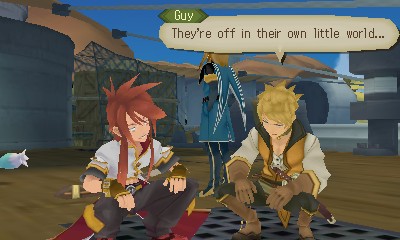
Fast-forward to January of 2019 though, and we reach a new milestone. Tales of Vesperia: Definitive Edition releases not just on all major platforms of the time (including the Switch) but it did so via a worldwide simultaneous launch! This was likely done to celebrate the tenth anniversary of the game and was helped by most of the translation being complete already, but it’s still an achievement for the series. Its lead character Yuri Lowell was so popular within the context of the series that he had to be retired from official popularity polls, a feat that only a few other Tales of characters can match.
Best of all it also meant the west finally got the much enhanced version of the game that was released in Japan on PS3 after the initial 360 run. This added Yuri’s rival and foil Flynn Scifo as a fully playable character, as well as pirate girl Patty Fleur and the usual addition of events and costumes. In that way it catered to all audiences: Xbox fans got an updated version of a game they might’ve loved previously, PlayStation fans got the localization they always hoped for, and Nintendo fans finally had another home console Tales game to play.
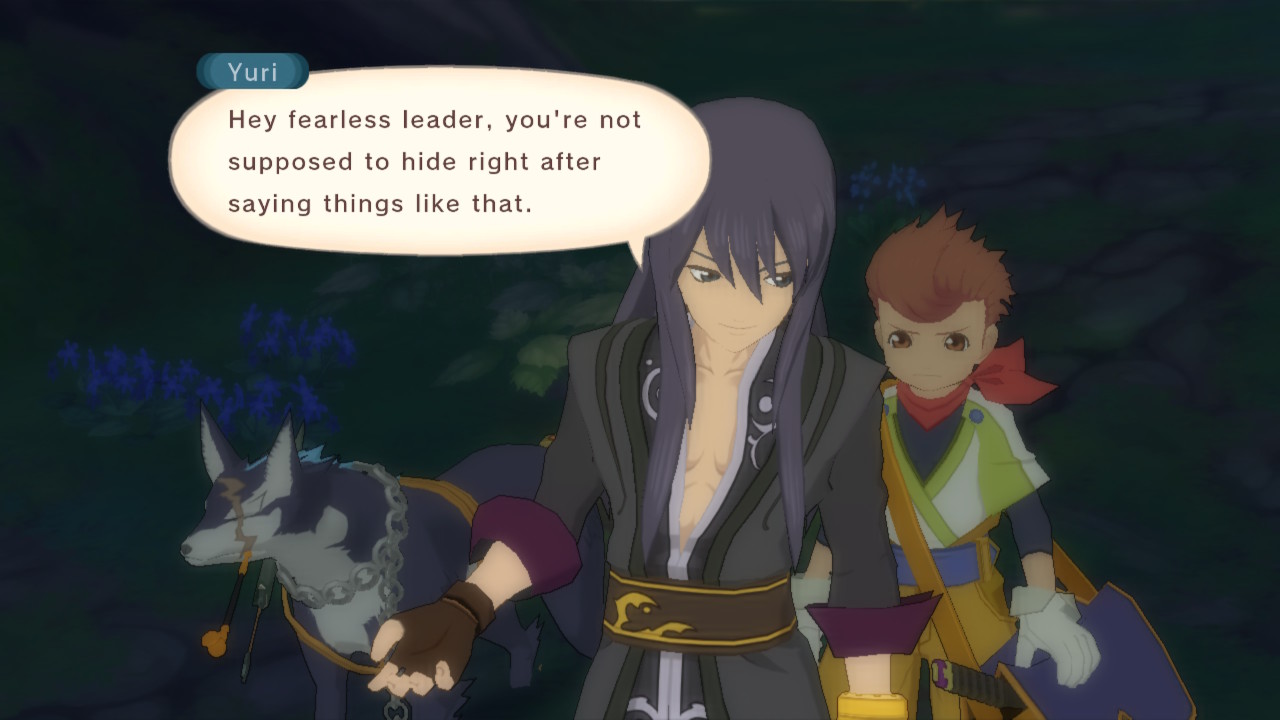
The future, unfortunately, doesn’t look to be adhering to that precedent. The next planned release for the series, Tales of Arise, is only announced for PS4 and Xbox One and was delayed indefinitely earlier this year. This may lead to it creeping onto next gen consoles, but it doesn’t bode well for Switch owners. With this being the 25th Anniversary year for the series, there may be hope for some previously unannounced ports (perhaps a Xillia dual pack or a similar set for Zestiria and Berseria) or some unexpected surprises. All I can hope for, though, is that the series’ Super Famicom roots and frequent, dare I say essential, Nintendo presence won’t be forgotten.


